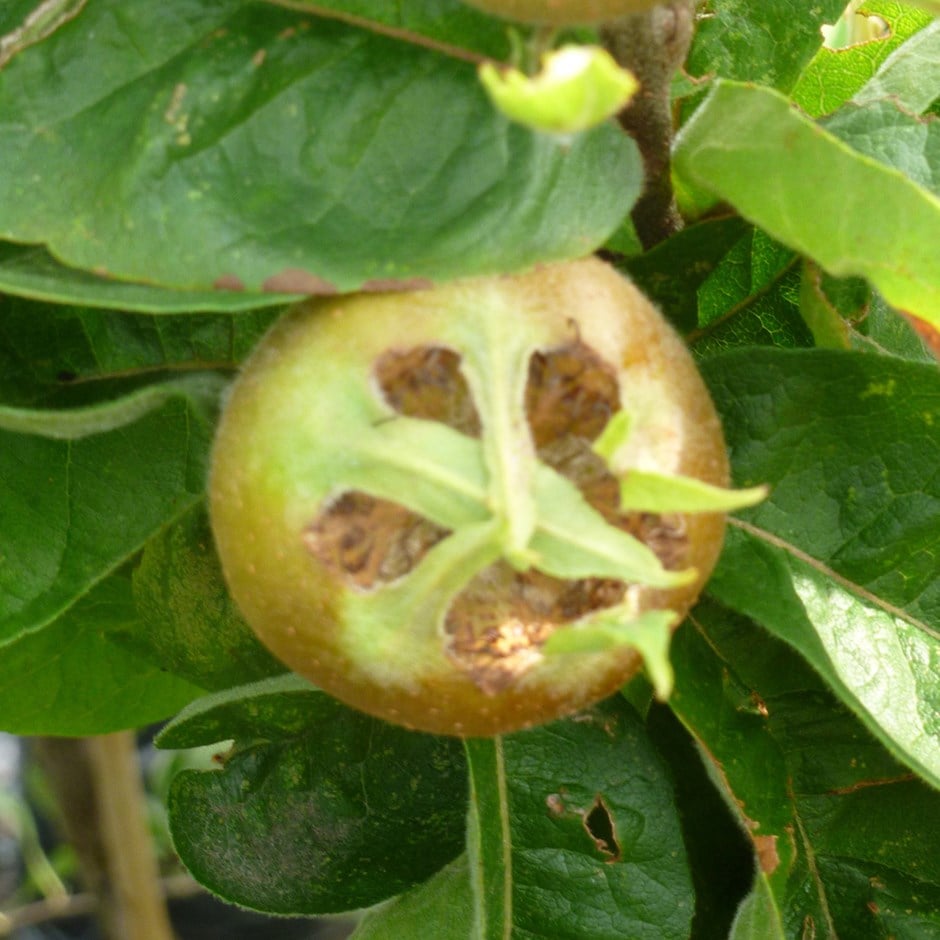medlar 'Royal'
medlar
- bare root | QA root stock | 1.2m
- £34.99
- available to order from autumn 2024
Delivery options
- Standard £7.95
- Position: full sun or light shade
- Soil: moderately fertile, moist but well-drained soil
- Rate of growth: slow to average
- Flowering period: May to June
- Hardiness: fully hardy
A compact cultivar ideal for smaller gardens, this medlar features oblong, leathery green leaves that turn yellow-brown in autumn, and attractive cup-shaped white flowers in late spring, followed by russet-brown fruit. This self-fertile tree bears fruit from late October to early November. 'Royal' is known for its superior-flavoured russet fruit, which can be eaten raw or used to make delicious jams and jellies. The tree's foliage adds to its charm, transitioning to warm shades of golden orange in autumn. It's worth noting that medlars require ripening to a soft, ‘bletted’ state before consumption. This small tree, steeped in history and mentioned by Shakespeare, offers both ornamental beauty and culinary potential.
When planting your medlar, prepare a hole up to three times the diameter of its root system. Fork over the base of the pit in readiness, incorporating plenty of organic matter into the backfill and planting hole. Avoiding frozen and waterlogged soil, trees should be planted out as they arrive. If you've ordered a bare root tree, soak the roots in a bucket of water for half an hour prior to planting, or if this is not possible, they can be heeled in temporarily, covering their roots with soil, or potted up. Choose a sheltered spot to protect emerging blossom. Remove dead, diseased and crossing branches while the tree is dormant during the winter months, shortening any overly long branches so they don't droop. After picking the fruits, they should be left to ripen for several weeks until the flesh has turned brown, soft and sweet and can be scooped out with a spoon.
